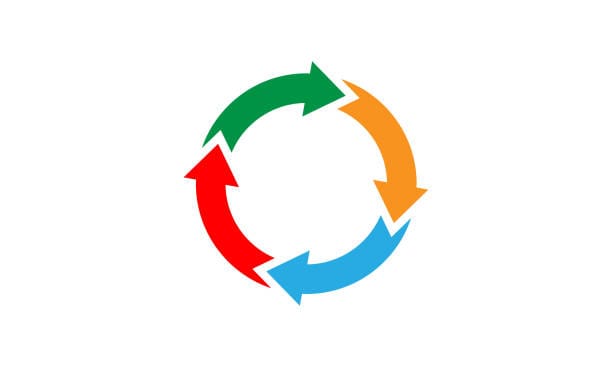Forward-Deployed Engineers: The Secret Weapon for Quality Engineering in 2025

In today’s fast-moving software landscape, doing more with less isn’t just a mantra; it’s an imperative. With teams operating leaner than ever, quality engineering (QE) and software leadership must find novel approaches to maximize productivity, streamline feedback loops, and deliver robust solutions at breakneck speed. Enter the Forward-Deployed Engineer (FDE) model: a transformative practice borrowed from Palantir’s government roots and turbocharged by AI pioneers like OpenAI.
In this post, we’ll explore: 1) What an FDE is; 2) How the model evolved; 3) Why QE teams should embed FDEs; 4) A four-phase workflow; 5) Essential skills and resourcing; 6) Real-world outcomes; 7) Challenges and mitigation; and 8) A practical roadmap for getting started.
1. Defining the Forward-Deployed Engineer for QE
A Forward-Deployed Engineer sits at the crossroads of software engineering, DevOps/QE, and customer success. Unlike a centralized QE squad, FDEs embed directly within product or client teams to:
- Integrate complex AI and QE tooling into live environments
- Customize end-to-end pipelines, from AI-driven test generation to monitoring dashboards
- Shorten feedback loops by coding, deploying, and iterating in situ
By breaking down traditional handoffs between developers, QE, and operations, FDEs accelerate delivery and drive a culture of continuous improvement.
2. From Palantir Origins to OpenAI’s Enterprise Push
Palantir’s Government Playbook
The FDE concept traces back to Palantir in the 2010s. Forward-Deployed Engineers there worked side-by-side with agencies; from ICE to United Airlines; solving high-stakes data problems on-site. This client-facing approach ensured rapid iteration, tailored integrations, and immediate feedback.
OpenAI’s QE-Focused Rotation (July 2025)
At Fortune Brainstorm AI in Singapore, OpenAI CTO Oliver Jay announced their FDE initiative: embedding engineers with key enterprise clients to move AI projects from proof-of-concept to full-scale, production-grade deployments. These FDEs specialize in building custom model integrations, fail-safe automation checks, and compliance gates directly within client environments.
3. Why QE Teams Must Embed FDEs
- Eliminate Integration Bottlenecks
- Traditional QE teams often “toss” automation requirements over the wall. FDEs carry self-contained CI/CD pipelines; complete with AI-based test generation, flaky-test detectors, and rollback triggers; directly into the product squad.
- Drive Continuous Improvement
- Embedded for 4–8 weeks, FDEs gather real usage data; coverage gaps, environment-specific flakiness, performance bottlenecks; and feed insights back into shared frameworks, uplifting the entire organization.
- Scale Lean Teams
- One FDE can replace a small QE pod by automating routine tasks (test scaffolding, maintenance, environment provisioning) using GenAI assistants; escalating only novel cases to senior QE leads.
- Upskill Product Engineers
- Through pair programming and post-mortem hackathons, FDEs transfer automation best practices, shifting quality ownership leftward and reducing long-term QE headcount needs.
4. The FDE Workflow: Four Phases to Success
| Phase | Duration | Key Activities |
|---|---|---|
| 1. Discovery & Scoping | Week 1 | Audit test suites, CI pipelines, and AI tooling integrations; identify top blockers. |
| 2. Custom Tooling Dev | Weeks 2–4 | Build/adapt AI-driven test generators; integrate auto-tagging and rollback logic. |
| 3. Embedded Training | Weeks 5–8 | Conduct workshops on AI test interpretation, environment drift, and parallelization. |
| 4. Metrics & Handover | Week 9 | Deliver dashboards (lead time, failure root-cause, deployment frequency) and playbooks. |
5. Essential Skills & Resourcing Strategies
- T-Shaped Expertise: Deep in one QE domain (e.g., API automation, performance testing) plus broad AI/ML and DevOps fluency.
- Consulting Mindset: Experience in client-engagement or consulting roles; e.g., former Palantir or systems integrators.
- Communication & Coaching: Ability to liaise with PMs, SREs, and security teams to bake compliance and blast-radius constraints into pipelines.
Resourcing Tip: Structure FDE roles as a 6–12 month rotation. This prevents burnout, spreads learnings, and builds a QE FDE Center of Excellence.
6. Real-World Metrics & Outcomes
- Sales Cycle Compression: AI startups report a 40% reduction in demo-to-deal time when using FDEs for on-site POCs.
- Deployment Velocity: OpenAI clients increased deployment frequency from monthly to weekly within three months, while reducing post-release incidents by 30%.
- Cost Efficiency: Automating 60% of test-maintenance tasks via GenAI scripts has allowed orgs to reallocate two-thirds of QE headcount to high-value work.
7. Challenges & Best Practices
| Challenge | Mitigation |
| Onboarding Overhead | Pre-load domain docs; pair FDEs with a subject-matter engineer for initial sprint. |
| Knowledge Silos | Document all scripts and pipeline changes in a shared QE-Automation-Playbook repo. |
| Burnout Risk | Rotate FDEs every 6–9 months; maintain a central QE guild for support. |
| Measuring ROI | Track metrics like “Time to First AI Test,” “Test-Maintenance Hours Saved,” and “Incident Rate.” |
8. Roadmap: Launching Your First QE FDE Pilot
- Select a High-Impact Squad: Choose a product team with flaky tests or slow delivery cycles.
- Define Success Metrics: Agree on targets (e.g., 50% fewer flaky builds, 2× faster releases).
- Embed, Automate, Handoff: Execute the four-phase workflow, emphasizing knowledge transfer.
- Scale & Codify: After pilot success, onboard additional FDEs, codify the playbook, and stand up your QE FDE Center of Excellence.
Lean Budgets + High Expectations
In an era of lean budgets and sky-high expectations, the forward-deployed engineer model offers a blueprint for turbocharging Quality Engineering. By embedding versatile, AI-savvy practitioners directly within product teams, organizations can eliminate bottlenecks, drive continuous improvement, and scale their impact without proportional headcount growth.
Are you ready to pilot your first QE FDE and unlock outsized productivity gains? The future of software quality is here; forward deployed.
👉 Want more posts like this? Subscribe and get the next one straight to your inbox. Subscribe to the Blog or Follow me on LinkedIn



Comments ()